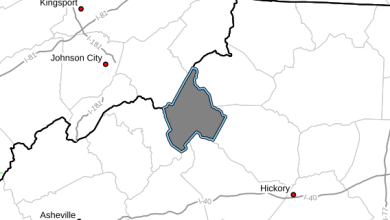
Each dollar anglers spend to fish for mountain trout in North Carolina returns $1.93 to its economy and results in a $1.38 billion impact, according to new data from the North Carolina Wildlife Resources Commission (NCWRC).
The Evaluation of North Carolina Trout Anglers’ Opinions, Participation and Socioeconomic Impact study was developed by NCWRC’s Conservation Policy & Analysis group and the Inland Fisheries Division. The report deep dives into an analysis of the socioeconomic aspects of trout fishing. In addition to monetary values (including out-of-state angler contribution, equipment and trip-related expenditures, etc.), the study explores anglers’ motivation for participating in the sport, satisfaction levels and challenges of trout fishing in this state, as well as feedback on NCWRC’s management of trout.
“We took a very comprehensive approach to this study. We wanted to better understand how anglers utilize the trout waters we manage and the views of trout fishing from the anglers themselves,” said Jake Rash, cold water fisheries research coordinator. “Understanding anglers’ motivations and perceptions provides broader insight into this popular North Carolina sport.”
The report was published in July and outlines how the various dollar amounts spent on this sport resulted in an overall economic impact of $1.38 billion. The previous economic impact evaluation, published in 2015, reported the impact to be $383 million. The increase in the economic impact of trout fishing is largely due to the increase in freshwater anglers in North Carolina. The number of fishing license holders increased 53% from 2014 to 2023, while the estimated number of trout anglers increased from 18.5% to 32% of all licensed anglers. The 29% increase in the cost of living since 2014 may also have played an important role in increasing the cost of equipment and trip-related expenditures.
“Given the recreational importance of trout fishing, it’s important for NCWRC to understand public perceptions on management of trout and expenditures on trout fishing,” said NCWRC Mountain Region Fisheries Supervisor, Doug Besler. “These surveys put an economic value on the resources we manage and help us focus our programs and infrastructure, such as capital investments in modern fish hatcheries. In addition, these surveys allow us to better communicate with constituents and partners about the value of the Public Mountain Trout Water program (PMTW) and its potential benefits to their community.”
The PMTW program manages approximately 5,400 miles and 2,600 acres of trout waters in 26 western counties, with six distinct classifications: catch and release, delayed harvest, hatchery supported, special regulations, wild trout waters and wild trout/natural bait waters. This year, the N.C. General Assembly granted $20 million to NCWRC to help fund a major renovation and expansion of the Bobby N. Setzer State Fish Hatchery, which is NCWRC’s largest trout-producing hatchery. NCWRC hatcheries produce and stock about one million brook, rainbow and brown trout each year.
PMTW also manages and oversees wild, self-sustaining trout populations; native brook trout conservation; aquatic organism passage and stream habitat projects; numerous partnerships; and aquatic nuisance species management.
Visit NCwildlife.org for summaries of both the economic and socioeconomic impacts, species information and the trout resource page (which contains information regarding regulations, maps, hatcheries and stocking efforts).

















